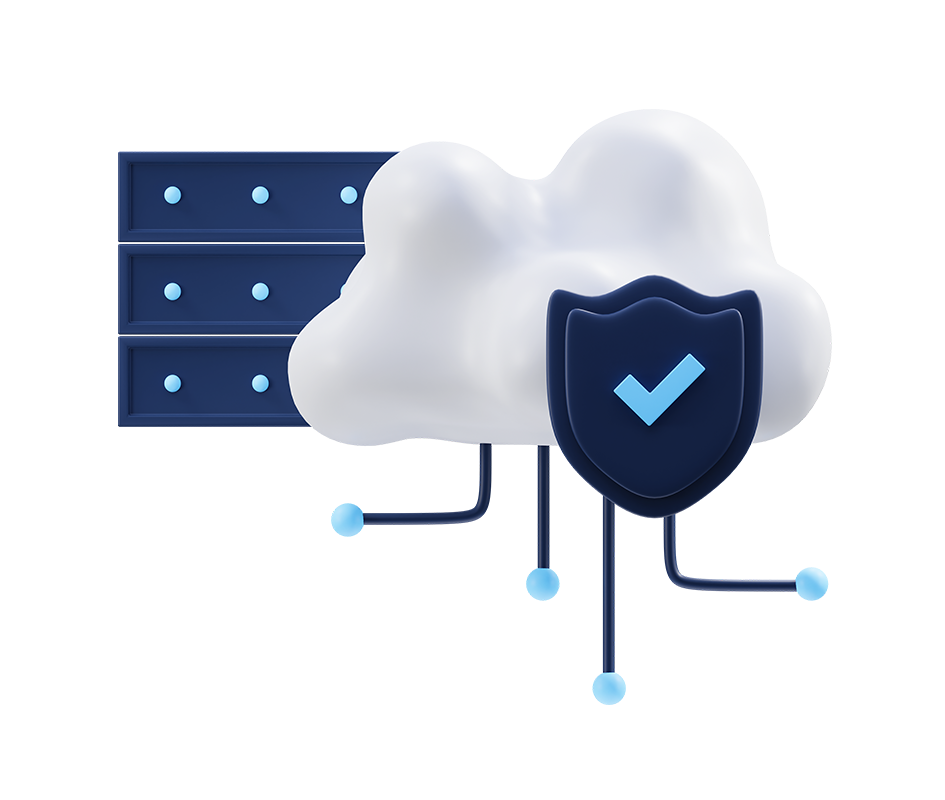

Rajesh Kumar
Director – Service Delivery (Infra & Cloud Management)
July 2, 2025
What is Zero Trust?
Zero Trust is a modern approach to cybersecurity based on a simple idea which is, don’t automatically trust anyone or anything, even if they’re inside your network. Instead, it constantly checks and verifies every user and device trying to access your systems or data. Zero Trust Architecture provides the structured framework that supports this approach, ensuring policies and controls are consistently enforced across all environments. Think of it like locking every door in your house and checking ID before letting anyone in, even family. It uses tools like multi-factor authentication and limits access so people only see what they need to do their jobs. With so many people working remotely and using cloud services, Zero Trust helps keep sensitive information safe by assuming threats could come from anywhere, even inside. It’s a smarter, more cautious way to protect what matters most.
Key concepts of Zero Trust
Don’t Automatically Trust Anyone
Just because someone’s in your network doesn’t mean they should have access. Everyone has to prove who they are every time.
Only Give People What They Need
People should only have access to the files or tools they need to do their jobs. Nothing extra, thereby reducing risk if something goes wrong.
Break Things into Smaller Pieces
Instead of one big open network, break it into smaller zones. That way, if a hacker gets in, they can’t easily move around.
Always Keep an Eye Out
Keep checking what users are doing and looking for anything unusual. Catching strange behavior early can prevent bigger problems.
Use More Than Just a Password
A password alone isn’t enough. Add extra steps like a code sent to your phone to ensure you’re logging in.
Check Devices Too
Don’t just trust the person, make sure the device they’re using is secure and up to date.
Protect the Data Itself
Ensure sensitive data is locked down, whether stored, shared, or on the move. Encrypt it and control who can see it.
Let Tech Do the Work
Automate checks and responses so threats can be stopped faster, with less room for human error.
Zero Trust and industry standards
Zero Trust isn’t just a new security buzzword. It actually complements the rules and standards many industries already follow to stay safe and compliant.
NIST (National Institute of Standards and Technology): NIST created a guide (called 800-207) that lays out how to build a Zero Trust system. It’s like a roadmap for organizations that want to tighten security without guessing.
ISO/IEC 27001: This international standard helps companies manage their information securely. Zero Trust fits right in by focusing on who gets access and keeping it limited.
CISA (Cybersecurity and Infrastructure Security Agency): CISA, a U.S. government agency, encourages public institutions to move toward Zero Trust and even provides step-by-step guidance.
PCI DSS (Payment Card Industry Data Security Standard): If a company handles credit card info, PCI rules apply. Zero Trust helps meet those rules by limiting access and watching for suspicious activity.
HIPAA, GDPR, and other privacy laws: Whether it’s health information (HIPAA) or personal data (GDPR), Zero Trust helps protect sensitive data and ensures that only the right people can see it.
How Zero Trust Works
Zero Trust is all about being careful about who and what gets access to your systems and data. It assumes that no user or device should be trusted automatically even if they’re already inside your network.
Here’s how it works, step by step:
Verify Identity Every Time
Before anyone can access anything, they have to prove who they are. It often includes passwords, codes sent to their phone, or fingerprints.
Check the Device
The system checks if the device is secure and up to date. If the laptop or phone looks risky, access might be blocked or limited.
Limit What They Can Access
Even after logging in, users see only what they need. For example, an HR employee can’t see finance data.
Monitor Behavior
The system monitors user behavior. If something seems off, like logging in from two places simultaneously, it can trigger alerts or shut down access.
Keep Doing It Continuously
It isn’t a one-time check. The system verifies users, devices, and actions in real-time every time.
The Business Benefits of Zero Trust
By shifting to a security model based on least-privileged access, Zero Trust brings both stronger protection and real business value. Here’s how:
Stronger Cybersecurity
Zero Trust removes the idea of automatic trust whether it’s based on being on the network, using a public IP, or any other traditional method. Instead, it uses smart rules based on context, connects users directly to apps, and continuously monitors activity. This makes it much harder for attackers to break in, and if they do, it limits the damage they can cause.
Lower Cost and Less Complexity
Instead of using multiple tools and systems, Zero Trust brings everything into one simplified platform. This means fewer things for IT to manage, lower operational costs, and better performance. Plus, stopping breaches before they happen saves a lot of money and time. By making systems more efficient, organizations can focus more on growth and innovation.
Support for Digital Transformation
Zero Trust is built for today’s world. It helps businesses confidently adopt cloud services, support remote workers, and manage devices like IoT and OT without sacrificing security.
Better User Experience
With Zero Trust, users connect directly to the apps they need no need to route through faraway data centers or deal with slow VPNs. This means faster access, fewer delays, and a smoother digital experience that helps people stay productive.
Common Use Cases for Zero Trust
User-Centric Use Cases
Remote Access Without VPN
Zero Trust lets users securely access internal apps without needing a VPN. It connects them directly to what they need. No complicated setups, no broad network access, and no unnecessary risk.
Secure Access to SaaS Apps
Whether it’s Microsoft 365, Salesforce, or other cloud services, Zero Trust enforces strict, least-privilege access policies. This ensures users can safely use these tools without putting sensitive data at risk.
Protecting Sensitive Data
Zero Trust platforms often include data loss prevention (DLP) features. These tools help identify and protect sensitive data whether it’s moving across the internet, stored in the cloud, or being used on a device.
Use Cases for Systems, Devices, and Partners
Securing Workloads in Multicloud Environments
Applications and services often talk to each other across different clouds. Zero Trust secures these communications, helping prevent malware from spreading and sensitive data from leaking.
IoT and OT Device Security
From smart sensors in factories to connected devices in retail branches, Zero Trust ensures these systems can operate safely. It limits what each device can access, reducing risk from poorly secured or outdated tech.
Third-Party and Partner Access
Vendors and contractors often need temporary or limited access. Zero Trust gives them just what they need, nothing more without exposing the entire network. And it does this without requiring software to be installed on their devices.

FAQs about Zero Trust Security
What is Zero Trust Security?
Zero Trust is a modern security approach that starts with the assumption that no one, whether inside or outside your organization, should be trusted by default. Instead of giving automatic access, it continuously checks and verifies who you are, the health of your device, and what you are allowed to do before granting access to any resources. It is like having a security guard who always asks for ID and permission, no matter where you are coming from. Partnering with Korcomptenz, an IT consulting company in USA, can help implement this approach effectively by providing the expertise and tools needed to design, deploy, and manage a Zero Trust framework tailored to your organization’s needs.
How is Zero Trust different from traditional perimeter-based security?
Traditional security is like locking the front door of a building and trusting everyone inside. Once someone is in, they often have wide access to everything. Zero Trust changes this idea completely. It never assumes trust just because you are inside the network. Instead, it enforces strict access controls and keeps verifying users and devices continuously, no matter where they are or what network they are on.
What are the core principles of Zero Trust?
Zero Trust is built on three main ideas:
- Verify explicitly: Always check who you are dealing with using all available information before granting access.
- Use least-privilege access: Give people only the minimum permissions they need to do their job, nothing more.
- Assume breach: Design your systems as if a security breach has already happened so you limit the damage and stop threats quickly.
Does implementing Zero Trust require replacing existing infrastructure?
Not at all. You do not have to tear down everything and start from scratch. Zero Trust can be introduced step-by-step by layering its principles onto your current systems. A smart approach is to focus on your most critical applications or sensitive data, and then gradually expand from there. Managed IT services and cybersecurity services complement Zero Trust methods, providing necessary guidance, round-the-clock monitoring, and tailored solutions that ensure security and effective operations.
What technologies support a Zero Trust architecture?
Several technologies help make Zero Trust possible, including:
- Identity and Access Management (IAM): Controls who can log in and what they can do.
- Multi-Factor Authentication (MFA): Adds extra layers of verification beyond just passwords.
- Endpoint Detection and Response (EDR): Monitors devices for suspicious activity.
- Microsegmentation: Divides the network into smaller zones to limit access.
- Security Information and Event Management (SIEM): Collects and analyzes security data in real time.
- Secure Access Service Edge (SASE): Combines networking and security for safer cloud access.
Share this article
Facebook
LinkedIn
Twitter
Use AI to summarize this article




